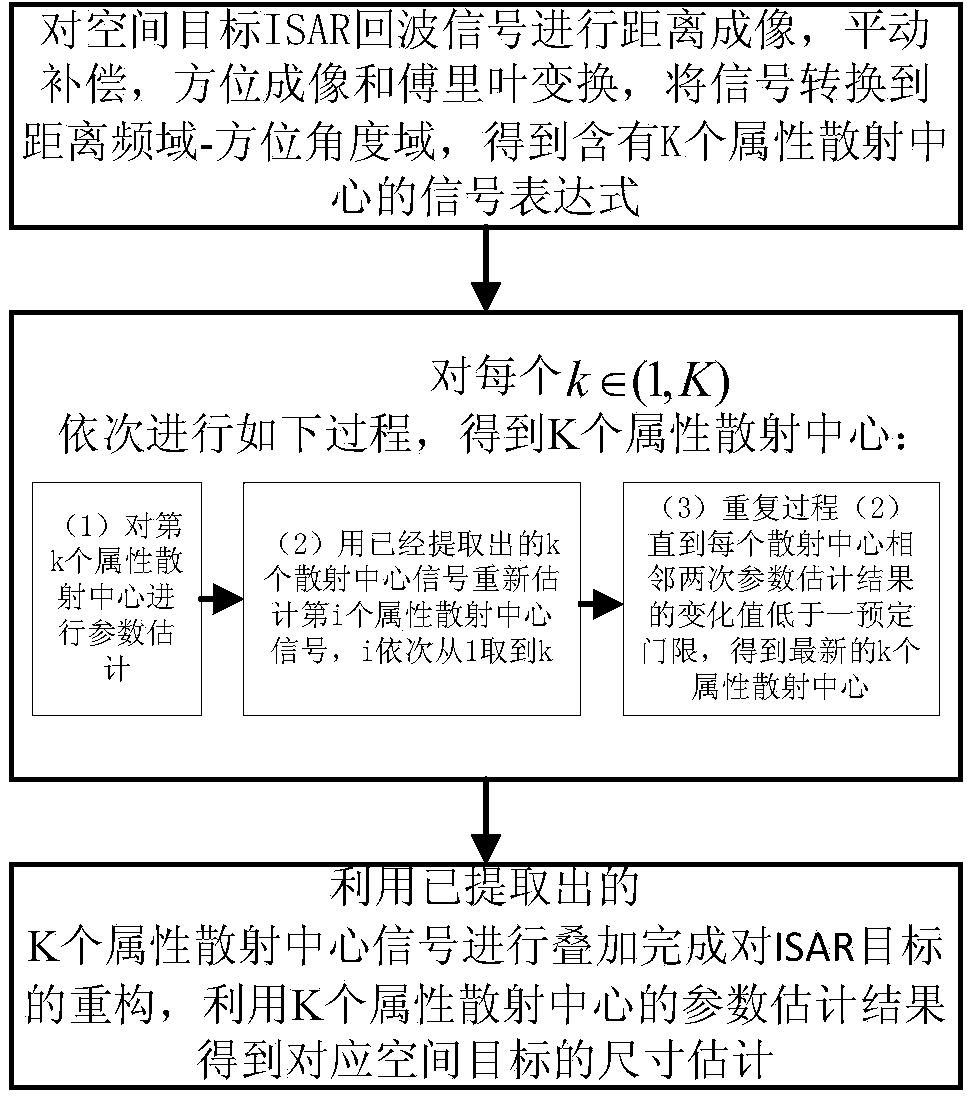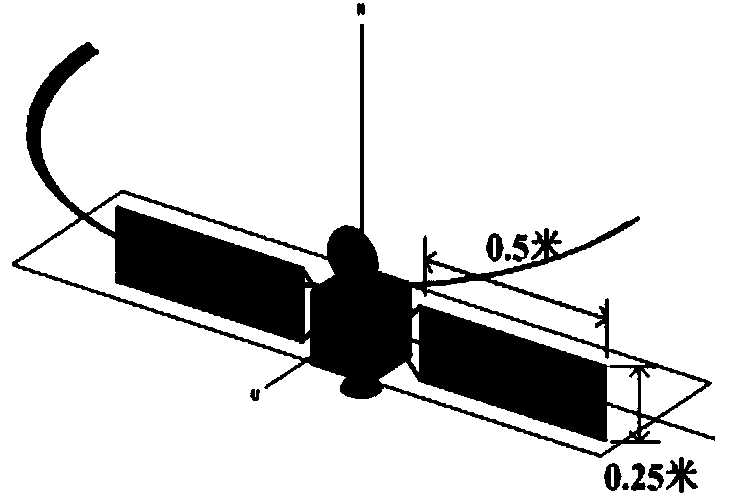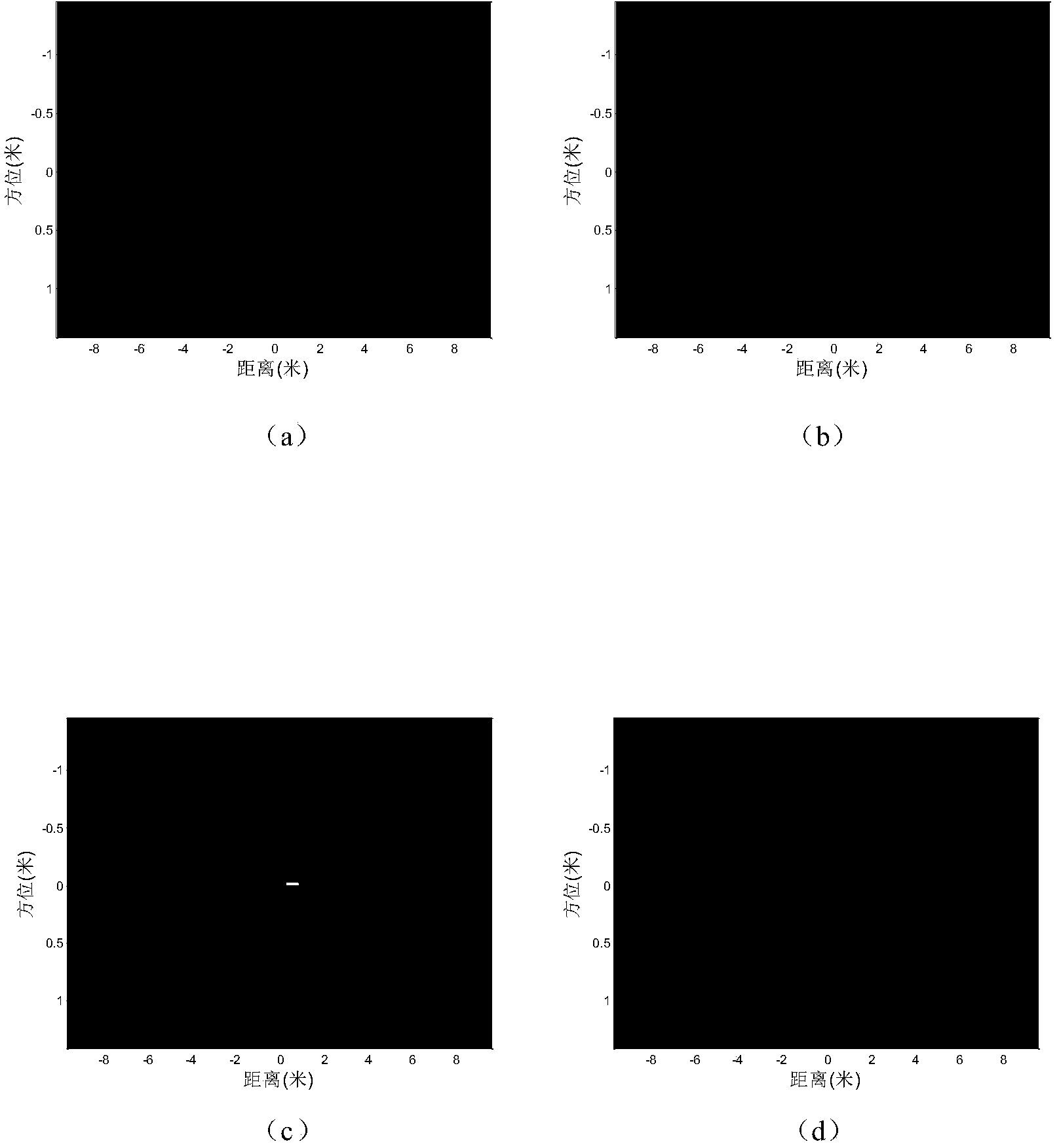Method for decomposing and reconstructing ISAR (inverse synthetic aperture radar) objects on basis of attributed scattering center model
A technology of attribute scattering center and target decomposition, applied in the field of inverse synthetic aperture radar (ISAR) imaging processing, can solve the problems of destroying signal integrity and low signal-to-noise ratio
- Summary
- Abstract
- Description
- Claims
- Application Information
AI Technical Summary
Problems solved by technology
Method used
Image
Examples
Embodiment 1
[0057] Example 1: Parameter estimation for the first attribute scattering center:
[0058] [1a] for the remaining signal S res1 (f, θ) for parameter estimation to get the estimated parameters of the first attribute scattering center with will estimate the parameters with Substituting into equation (8), the first scattering center signal is obtained
[0059] Using formula (15) to get the reconstructed signal S 1 (f, θ), using S 1 (f, θ) re-estimated parameters with Use formula (8) to get the first attribute scattering center signal
[0060] [1c] The reconstructed signal S obtained from formula (15) when i=1 1 (f,θ) and the residual signal S res1 (f, θ) are equal, the change value of two adjacent parameter estimation results is zero, lower than the preset threshold, and there is no need to repeat the process [1b]; using formula (10), the remaining signal S res2 (f, θ);
Embodiment 2
[0061] Example 2: Parameter estimation for the first and second attribute scatter centers:
[0062] [2a] For the remaining signal S res2 (f, θ) for parameter estimation to get the estimated parameters of the second attribute scattering center with will estimate the parameters with Substituting into equation (8), the second scattering center signal is obtained
[0063] [2b] Use formula (15) to get the reconstructed signal S 1 (f, θ), using S 1 (f, θ) re-estimated parameters with Use formula (8) to get the first attribute scattering center signal
[0064] [2c] Use formula (15) to get the reconstructed signal S 2 (f, θ), using S 2 (f, θ) re-estimated parameters with Use formula (8) to get the second attribute scattering center signal
[0065] [2d] Repeat the process [2b] and [2c] to re-estimate the first and second attribute scattering centers until the change value of the two adjacent parameter estimation results of each scattering center is lower than...
Embodiment 3
[0067] Example 3: Parameter estimation for the first, second and third attribute scatter centers:
[0068] [3a] For the remaining signal S res3 (f, θ) for parameter estimation to get the estimated parameters of the third attribute scattering center with will estimate the parameters and Substituting into equation (8), the third scattering center signal is obtained
[0069] [3b] Use formula (15) to get the reconstructed signal S 1 (f, θ), using S 1 (f, θ) re-estimated parameters with Substituting the original estimated parameters; substituting into formula (8) to get the first scattering center signal again
[0070] [3c] Use formula (15) to get the reconstructed signal S 2 (f, θ), using S 2 (f, θ) re-estimated parameters with Substituting the original estimated parameters; substituting into formula (8) to get the second scattering center signal
[0071] [3d] Use formula (15) to get the reconstructed signal S 3 (f, θ), using S 3 (f, θ) re-estimated pa...
PUM
 Login to View More
Login to View More Abstract
Description
Claims
Application Information
 Login to View More
Login to View More - R&D
- Intellectual Property
- Life Sciences
- Materials
- Tech Scout
- Unparalleled Data Quality
- Higher Quality Content
- 60% Fewer Hallucinations
Browse by: Latest US Patents, China's latest patents, Technical Efficacy Thesaurus, Application Domain, Technology Topic, Popular Technical Reports.
© 2025 PatSnap. All rights reserved.Legal|Privacy policy|Modern Slavery Act Transparency Statement|Sitemap|About US| Contact US: help@patsnap.com



